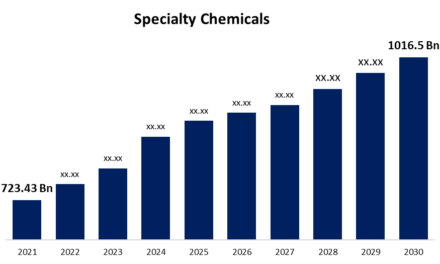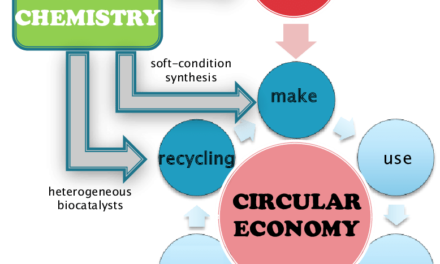The pharmaceutical industry is tackling antibiotic resistance by developing novel chemicals and innovative strategies to combat multidrug-resistant pathogens. These efforts include creating new antibiotics, enhancing existing ones, and exploring alternative approaches to traditional therapies. Here’s how the industry is addressing this global health crisis:
1. Development of Novel Antibiotics
- New Chemical Classes:
- Researchers are focusing on identifying new classes of antibiotics that target previously unexplored bacterial pathways.
- Example: Teixobactin, a novel antibiotic that inhibits bacterial cell wall synthesis, has shown promise against resistant strains.
- Synthetic Antibiotics:
- Synthetic molecules are being designed to overcome resistance mechanisms.
- Example: Oxepanoprolinamide (a synthetic compound) targets bacterial ribosomes with high specificity.
2. Enhancing Existing Antibiotics
- Combination Therapies:
- Pairing existing antibiotics with adjuvants or resistance inhibitors to restore their efficacy.
- Example: β-lactamase inhibitors like clavulanic acid are used with β-lactam antibiotics to overcome bacterial resistance.
- Chemical Modifications:
- Altering the structure of existing antibiotics to evade bacterial resistance mechanisms.
- Example: Modified aminoglycosides like plazomicin are effective against resistant pathogens.
3. Targeting Novel Pathways
- Unique Mechanisms of Action:
- Identifying and targeting bacterial pathways not affected by current antibiotics.
- Example: Inhibitors of bacterial DNA gyrase or topoisomerase IV, essential enzymes for bacterial replication.
- Bacterial Communication:
- Disrupting quorum sensing (bacterial communication) to prevent the formation of biofilms and virulence.
- Example: Quorum-sensing inhibitors like furanones reduce bacterial virulence without inducing resistance.
4. Alternative Therapies
- Bacteriophage Therapy:
- Using viruses that infect and kill specific bacteria as an alternative to antibiotics.
- Example: Phage cocktails are being developed to target multidrug-resistant infections.
- Antimicrobial Peptides (AMPs):
- Small peptides that disrupt bacterial membranes, offering a broad spectrum of activity.
- Example: Polymyxins are being revisited with improved formulations to reduce toxicity.
- Immune-Modulating Therapies:
- Enhancing the host immune response to clear infections without relying solely on antibiotics.
5. Nanotechnology in Antibiotics
- Nanocarriers:
- Deliver antibiotics directly to the site of infection, reducing off-target effects and resistance development.
- Example: Liposomal formulations of antibiotics like AmBisome improve efficacy and reduce toxicity.
- Nanoantibiotics:
- Nanoparticles with inherent antimicrobial properties, such as silver nanoparticles, are being explored as alternative treatments.
6. CRISPR-Based Technologies
- Gene Editing:
- Using CRISPR-Cas systems to target and destroy antibiotic-resistant genes in bacteria selectively.
- Impact:
- Directly reverses resistance, allowing previously ineffective antibiotics to regain efficacy.
7. High-Throughput Screening for Novel Molecules
- Chemical Libraries:
- Screening large libraries of synthetic and natural compounds to identify potential antibiotics.
- Example: Automated systems are used to identify compounds with activity against resistant bacteria.
- AI and Machine Learning:
- Leveraging artificial intelligence to predict and design new antibiotic candidates.
- Example: AI identified Halicin, a new antibiotic with a novel mechanism of action, effective against resistant bacteria.
8. Overcoming Resistance Mechanisms
- Efflux Pump Inhibitors:
- Chemicals that block bacterial efflux pumps, preventing the expulsion of antibiotics and increasing their intracellular concentration.
- Example: Phenylalanine-arginine β-naphthylamide (PAβN) as an efflux pump inhibitor.
- Biofilm Disruption:
- Novel chemicals target and disrupt biofilms, which shield bacteria from antibiotics.
- Example: Enzymatic agents that degrade biofilm extracellular matrix.
9. Supporting Sustainable Antibiotic Use
- Antibiotic Stewardship:
- Ensuring the judicious use of existing antibiotics to slow the emergence of resistance.
- Diagnostics:
- Rapid diagnostic tools are being developed to guide the appropriate use of antibiotics.
- Example: Point-of-care tests to identify specific pathogens and their resistance profiles.
10. Collaboration and Open Innovation
- Public-Private Partnerships:
- Collaborations between governments, academia, and industry to fund antibiotic research and development.
- Example: The Combating Antibiotic-Resistant Bacteria Biopharmaceutical Accelerator (CARB-X) supports innovative solutions.
- Global Surveillance Programs:
- Monitoring resistance patterns worldwide to guide research and policy.
11. Addressing Economic Barriers
- Incentivizing R&D:
- Governments and organizations are providing grants, tax incentives, and market-entry rewards for antibiotic innovation.
- Example: The U.S. FDA’s Qualified Infectious Disease Product (QIDP) designation provides incentives for developing new antibiotics.
12. Focus on Natural Products
- Rediscovering Natural Antibiotics:
- Screening natural sources like soil microbes and marine organisms for new antibiotic compounds.
- Example: Daptomycin, derived from soil bacteria, is effective against resistant Gram-positive infections.
- Biosynthetic Engineering:
- Genetically modifying microbes to produce novel antibiotics with improved properties.
Conclusion
The pharmaceutical industry is addressing antibiotic resistance through a multifaceted approach, including the development of novel chemicals, innovative delivery systems, and alternative therapies. By leveraging cutting-edge technologies like nanotechnology, CRISPR, and AI, alongside sustainable practices and global collaborations, the industry is making strides toward combating one of the most pressing public health challenges of our time. Continued investment in research and innovation is essential to ensure a robust pipeline of effective treatments for antibiotic-resistant infections.
Hashtags
#AntibioticResistance #AMRChallenge #Superbugs #TacklingResistance #AntimicrobialResistance #NovelChemicals #InnovativeAntibiotics #NextGenAntibiotics #ChemicalInnovation #FutureOfMedicine #PharmaForAMR #PharmaceuticalInnovation #AntibioticsResearch #DrugDevelopment #PharmaAgainstResistance #GlobalHealth #AMRPolicy #HealthInnovation #RegulationsForAMR #GlobalAMRStrategy #ScienceCollaboration #R&DForAMR #ChemicalR&D #PartnershipsForHealth #AMRResearch

















